- bashimmigration@yahoo.com
- Work Hours : Mon - Fri : 10:00 AM - 02:00 PM
Study in USA
Study in USA
The USA is a paradise for overseas education seekers. The quality, performance and heritage of educational institutions in the US are nothing new. The American education system offers international students a globally recognized degree. Acquiring knowledge through world-class learning opens the gates to a wide range of employment opportunities in the international job market.
Due to its international reputation and high academic standards, the American education system ensures that every student is trained to be the best in their field of study. Studying in the USA will make you a valued asset wherever you move to seek employment opportunities.
An idiosyncratic education system, practical lectures, smaller classrooms and closed-door discussions ensure seamless academic understanding. A US education guarantees both academic and professional career progression and advancement for any international student.

Intake in the USA
An Intake is a period when an educational institution opens its doors to admit students for the academic year. In the USA, there are several enrolment periods per year.
Enrolment periods in the USA:
- Fall enrolment September – January
- Winter intake January – May
- Summer intake May-August
Semester Break
The semester break takes place during the following periods,
December: 4 – 6 weeks (winter break)
March / early April: 4 weeks (Spring Break)
Study programs and levels of education in the USA
Degrees are awarded at various levels at colleges and universities in the USA. An international student can earn one of the following degrees at US institutions.
- Associate degree
- Bachelor’s degree
- Master’s degree
- Doctorate degree
An associate degree is a blend of 2 degrees offered by community colleges in the US. You earn an associate degree in the first 2 years and a bachelor’s degree in the remaining 2 years.
Types of Associate Degrees:
Associate of Arts – courses in business, humanities, arts or social sciences.
Associate of Science – degree program in mathematics and the natural sciences
Associate of Applied Science – Vocational programs such as Computer Science Technology, Hospitality Management, Paralegal Studies, Law Enforcement, Welding, Carpentry, etc.
Requirements
- Applicant should be at least 18 years of age
- High school diploma (equivalent to US education) or passed GED (General Education Development) or another equivalent
- An overall IELTS score of 6.5, with no band less than 6.0 is highly desirable
- Meet the minimum GPA requirements of the college or university to which you are applying.
Bachelor’s Degree:
The bachelor’s degree in the USA takes 4 years to complete. International students can choose their major based on their knowledge, high school diploma and interests.
Prerequisites
Graduation from high school (grade 12 or diploma).
- A minimum 2.50 to 3.60 GPA in previous education
- An overall IELTS score of 6.0 with no band below 6.0
Master’s Degree:
A master’s degree can be obtained in one or two years, depending on your choice of program, subject area and university.
Requirements
- 4 years bachelor’s degree
- grade point average of 3.0 to 3.75 in previous studies
- An overall IELTS score of 6.5, with no band less than 6.0
Popular programs in the USA
The widespread institutions in the United States offer a plethora of programs and this is a key reason why international students choose to study in the country.
- Computer Science
- Engineering
- Economics
- Mathematics, Physical and Life Sciences
- Social Sciences
- Education
- Fine and applied arts
Advantages of the USA Study Visa
A study visa to the United States of America offers international students the following benefits:
- Study at one of the best institutions in the world
- Exploring the diverse landscapes of America
- The highest quality of education and an innovative education system
- Numerous scholarships and financial aid for international students
- Enjoy a brilliant range of research
- High academic flexibility
- Receive an internationally recognized degree
- Introduction to an international lifestyle and cultural diversity
- Opportunities for employment in Fortune 500 companies.
- Bring your spouse and children with you to the USA
Work Permit For Postgraduates
International education in the US not only confers a globally recognized degree, but also a postgraduate work permit for up to 24 months after graduation. There is also a PGWP extension of up to 12 months for OPT (Optional Practical Training).
So, with international education in the United States, you will receive a work permit for a minimum of 1 year and a maximum of 3 years after completing your program.
What you should know!
CPT – Curricular Practical Training
CPT status allows international students on F1 study visas to gain work experience through stipend internships in their field of study. You are required to complete your CPT before graduating.
OPT – Optional Practical Training
OPT is for international students on F1 study visas who wish to gain work experience after graduation. OPT applies to both bachelor’s and master’s degrees. Your Designated School Official (DSO) will recommend OPT in SEVIS.
There are 2 types of OPT,
- OPT before graduation
- OPT after completion of the degree
Pre-Completion OPT – This status can be applied for after completing the first academic year of your program at a SEVP (Student and Exchange Visitor Program) certified institution. This status allows you to work part-time up to 20 hours per week or full-time before your program ends.
Post-Completion OPT – This can be applied for after you have completed your program. If you are approved for Post-Completion OPT, you can work 20 hours per week part-time or full-time.
Types of institutions in the USA
Public universities, state colleges or universities – Public universities are administered by the state government and funded by public taxes.
Private universities – Private universities receive their operating funds from foundations, donations and other private sources rather than from the government.
Technical institutes – Technical institutes are known for their technological research. They offer certificates and other short-term programs to train students.
Community Colleges – Community colleges offer two-year associate degree programs, whether they are public or private institutions.
Notable institutions in the USA
There are many globally recognized institutions in the US where you can complete your overseas education. Some of them are listed below and we can assist you to obtain admissions.
- Johns Hopkins University
- DePaul University, Chicago
- Central Michigan University
- Eastern Michigan University
- University of Illinois at Chicago
- Illinois Institute of Technology, Chicago
- Illinois State University, Illinois
- Roosevelt University
- Arizona State University, Illinois
- University of California
- George Mason University
- University of Illinois Chicago
- Washington State University
- Kent State University
- Oregon State University
- University of Montana
- Wright State University
- California State University
- University of Dayton
- Western Michigan University
- Troy University, Alabama
- Trine University, Arizona
- State University of New York
- Rochester Institute of Technology, NY
- Adelphi University, NY
- Long Island University, Brooklyn
- New York Institute of Technology
- Utica University, NY
- Arkansas State University
- Florida Atlantic University
- University of Central Florida (UCF)
- University of West Florida
- University of Tampa
- Atlantis University
- Drew University (New Jersey)
Types of institutions in the USA
Public universities, state colleges or universities – Public universities are administered by the state government and funded by public taxes.
Private universities – Private universities receive their operating funds from foundations, donations and other private sources rather than from the government.
Technical institutes – Technical institutes are known for their technological research. They offer certificates and other short-term programs to train students.
Community Colleges – Community colleges offer two-year associate degree programs, whether they are public or private institutions.
Notable institutions in the USA
There are many globally recognized institutions in the US where you can complete your overseas education. Some of them are,
- Ivy League Universities
- Brown University – Rhode Island
- Columbia University, New York
- Cornell University, New York
- Dartmouth College, New Hampshire
- Harvard University, Massachusetts
- Princeton University, New Jersey
- University of Pennsylvania (U Penn), Pennsylvania
- Yale University, CT Illinois Institute of Technology – Chicago
A step-by-step guide to applying for a study visa in theUSA
If you want to apply for a US study visa, this step-by-step guide will help you.
Step 1: First, select the program you want and find the university of your choice that offers the program you want.
Step 2: Register for one of the English language tests such as IELTS, TOEFL, Duolingo or PTE and standardized tests such as SAT/ACT, GRE, GMAT, MCAT and LSAT. Since taking these tests is an important requirement for international study, you should make sure that you have taken the test with the required minimum score.
Step 3: Apply early to the institution. Pick your study places and know the application deadlines to apply. Receive the offer letter once you have successfully applied to the institution.
Step 4: Complete the SEVIS process. You will need to pay a prescribed fee to the Student and Exchange Visitor Information System (SEVIS). This fee is different from the visa application fee.
Step 5: Apply for a study visa (F1, M1, or J1). Your study program will determine which study visa you need to apply for.
Step 6: Visit the nearest US Embassy or Consulate to apply for an international student visa. Pay the visa application fee and submit your visa application.
Step 7: Complete the visa interview – make an appointment for the interview at the nearest US Embassy you have chosen and wait for the call. Take all the required documents with you. When you are called, go to the interview and answer the questions asked. Justify why you have chosen your institution, your program and especially the USA.
Step 8: Receiving your visa – After the interview, you will find out whether your visa has been approved. If approved, you will receive your visa stamped within 3 to 7 days.
Bonus step! Also, pretty important!
Contact a registered expatriate advisor. Because this is easier said than done. The process described above may seem simple, but it requires expertise in visa applications and approval procedures. You may find it confusing and miss crucial steps, but an education consultant will never let you fail and will constantly push your application towards success.
We are a registered overseas education and immigration company that has been in the business for more than a decade!
With our experienced and certified international education consultants, we have placed a huge number of students worldwide.
Our education consultants, trained by US admissions officers, assess your profile and provide you with tailored guidance. They will suggest well-run programs and institutions that will help you make your US education flawless. Talk to our experts now!

